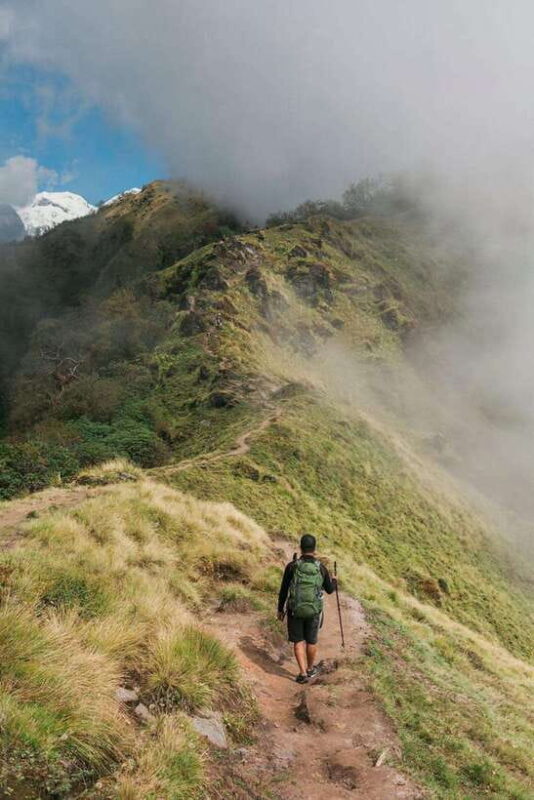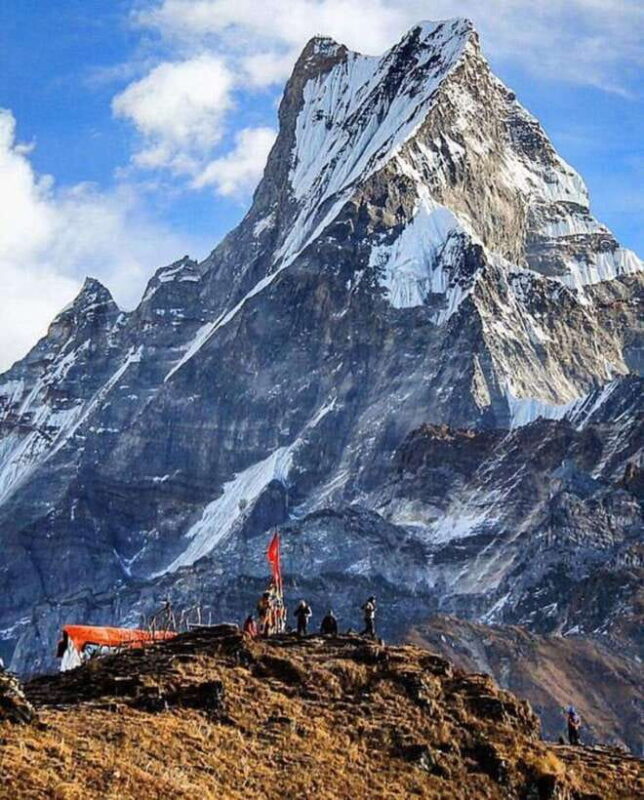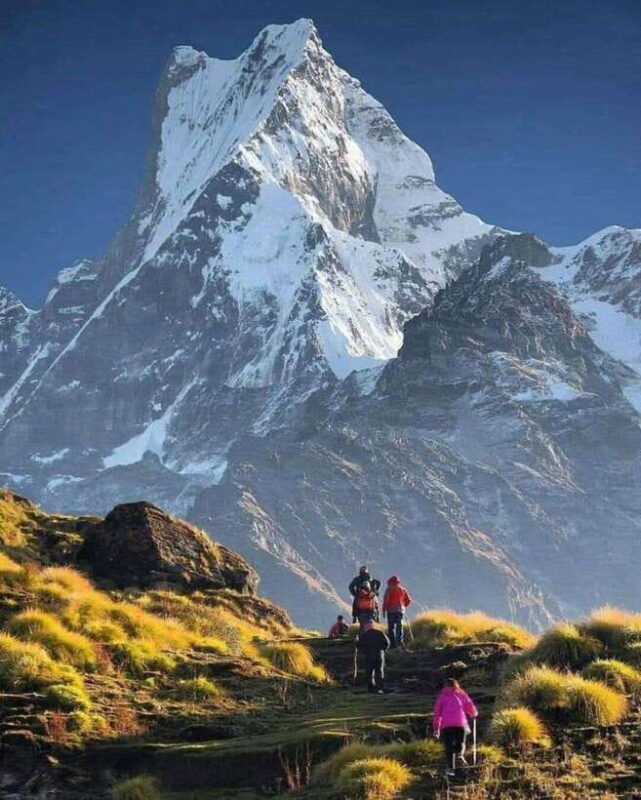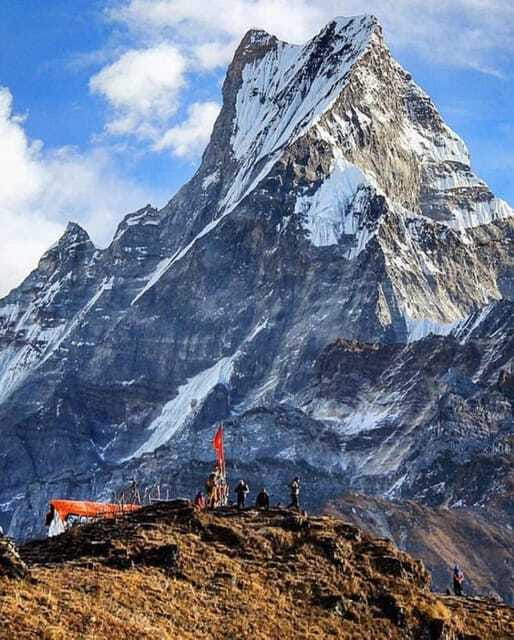If you’re considering Nepal and looking for a trek that offers stunning vistas without the crowds of Everest or Annapurna Base Camp, the Mardi Himal Trek might just be your ideal choice. It’s a journey that balances breathtaking mountain scenery, authentic local culture, and manageable daily walks—perfect for travelers who want more than just a photo op.
What we particularly love about this trek is how close you’ll get to some of the most iconic peaks, like Annapurna South and Fishtail, all while traveling through lush forests and charming villages. Plus, you’ll experience genuine Nepali hospitality in villages like Lwang, where traditional Gurung homes and warm welcomes are common. On the flip side, the basic facilities in teahouses and the need for good physical fitness might be considerations for some.
This trip is best suited for those who enjoy moderate trekking and are eager to combine stunning landscapes with culture. If you appreciate well-organized tours with knowledgeable guides, this adventure promises a meaningful trek in one of Nepal’s most beautiful yet less crowded regions.
Key Points

- Shorter Crowds: Less popular than Annapurna Base Camp, offering more solitude.
- Spectacular Views: Panoramas of Annapurna South, Fishtail, and Mardi Himal from multiple viewpoints.
- Cultural Encounters: Authentic Nepali and Gurung villages with warm hospitality.
- Varied Terrain: From subtropical forests to alpine ridges, each step offers new scenery.
- Comfortable Amenities: Stay in teahouses and camps, with hearty meals and limited facilities.
- Great Value: For $1,400, you get guided trekking, permits, accommodations, and equipment.
An Honest Look at the Mardi Himal Trek Experience

We’re here to give a straightforward review of this 9-day trek, highlighting what makes it unique, what to expect, and whether it fits your travel style. From the moment you land in Kathmandu, the journey begins with a mix of excitement and anticipation. The inclusion of airport transfers, hotel stays, and domestic flights already signals a well-organized trip, ensuring smooth transitions from city to trail.
You can also read our reviews of more tours and experiences in Pokhara.
Starting in Kathmandu: City Charm and Prep
Your adventure kicks off with two nights in Kathmandu, staying in a comfortable 3-star hotel. This gives you a chance to get acclimated, enjoy some sightseeing, and experience Nepali hospitality firsthand. The hotel stay is included, along with breakfast, offering a good foundation before heading into the mountains.
The Flight to Lukla: A Scenic Ascent
The flight from Kathmandu to Lukla is a highlight in itself. Known for its dramatic approach, this short flight offers spectacular views of the mountains and the rugged landscape below. It’s a reminder why Nepal’s air routes are considered some of the most picturesque in the world—just be prepared for typical mountain weather conditions, which can sometimes cause delays.
Trekking through Lush Forests and Villages
The trail begins with a descent into subtropical forests, filled with the scent of pine and the sight of rhododendrons—especially vibrant in spring. We loved the way the landscape transitions from dense foliage to more rugged terrain as you ascend. The variety keeps each day interesting, with trails winding through rhododendron groves, bamboo forests, and alpine meadows.
The walk typically involves five to six hours daily, which is manageable for most active travelers. The group size tends to be small, guided by experienced Nepalese guides who are praised for their knowledge and friendliness. Their insights make the journey more meaningful, sharing stories and background about local culture and the mountains.
More Great Tours NearbyCultural Encounters in Lwang and Other Villages
One of the most memorable parts of the trek is visiting villages such as Lwang, home to the Gurung community. The Gurung are proud of their traditions, and you’ll likely see traditional stone houses with intricate woodwork and experience their warm hospitality firsthand. Several reviews highlight how genuine these interactions are, with travelers noting that they felt like welcomed guests rather than travelers.
Breathtaking Viewpoints and Photo Stops
The views from various viewpoints are arguably the highlight. From High Camp or Viewpoints, you’ll get unobstructed vistas of Annapurna South, Fishtail (Machapuchare), and Mardi Himal—peaks that dominate the skyline. These are perfect spots for photos or just soaking in the grandeur of these ancient giants. The views are so striking that many travelers mention feeling an emotional rush at these heights.
Accommodation: Teahouses and Camps
Lodging along the trail is in simple teahouses or camps. The facilities are basic, with shared baths and limited amenities. Meals are hearty, usually consisting of rice, dal, vegetables, and occasionally meat—what you’d expect from mountain fare but satisfying after a day’s walk. Many reviews mention the camaraderie with fellow trekkers over breakfast and dinner, sharing stories from around the world.
The Final Ascent and Return
The last days involve a steady climb to Mardi Himal Base Camp, offering some of the best mountain views on the trek. The sense of achievement at reaching this less-visited summit is genuine. After retracing your steps, the journey concludes with the flight back to Kathmandu, completing a loop that mixes adventure and cultural exchange.
Analyzing the Value: Is It Worth It?

At $1,400 per person, this trip includes nearly everything—permits, domestic flights, accommodations, meals, guide, porter, and basic equipment. For many, this all-in rate offers peace of mind and excellent value, considering the quality of guides and the stunning scenery.
The inclusion of gear like a sleeping bag, down jacket, and a trip certificate adds convenience, especially if you’re not traveling with your own equipment. Plus, the safety net of emergency rescue operations adds reassurance, given the remote mountain environment.
While the accommodation is modest, it’s consistent with what you’d expect in mountain teahouses. You won’t find luxury, but the focus on authenticity makes up for that. Conversely, travelers who seek high-end amenities or hot showers might find this aspect a little rough, so packing your patience along with your gear is advised.
Seasonal Considerations
The best times to do this trek are spring and autumn—when the weather is milder, and visibility is clearer. The vivid blooms in spring, especially when rhododendrons turn the hills red, are particularly beautiful. Winter treks are possible but come with harsher conditions and more slippery trails, so only seasoned winter trekkers should consider this.
Practical Tips
- Physical fitness is essential; walking five to six hours daily across uneven terrain can be demanding.
- Timing matters—early mornings are cooler, and afternoons can be busier with trekkers.
- Altitude at around 4,500 meters (Mardi Himal Base Camp) requires some acclimatization; listen to your guide’s advice.
- Packing light but smart—layered clothing, good hiking boots, and basic personal gear.
Who Will Love This Trek?

This trek is perfect for travelers who want breathtaking mountain views without the crowd, and who don’t mind basic accommodation for a taste of authentic Himalayan life. It offers a good balance of adventure, culture, and manageable physical challenge. It’s an excellent choice for those who enjoy guided tours and value knowledgeable guides to help bring the region’s stories to life.
If your goal is to see the Annapurna range up close but avoid the more commercial routes, Mardi Himal provides a rewarding, less crowded alternative. It’s also suitable for those with moderate trekking experience who are comfortable walking several hours daily.
The Sum Up: Who Should Consider This Trek?

This 9-day trek offers an authentic, rewarding experience in the heart of the Himalayas. Its impressive views of peaks like Annapurna South and Fishtail, combined with cultural encounters in Gurung villages, make it a unique journey. The well-organized logistics, inclusive price, and experienced guides ensure you’re in good hands, especially if you’re new to trekking or want a hassle-free adventure.
It’s best suited for travelers who appreciate natural beauty and cultural authenticity without the need for luxury accommodations. Those who enjoy moderate physical activity and are prepared for basic facilities will find this trek perfectly suited to their needs.
If you’re after a genuine Nepali mountain experience that balances adventure with comfort, the Mardi Himal Trek really delivers. It’s a chance to see some of the most stunning scenery in the Himalayas while connecting with local communities in a meaningful way.
FAQs
Is prior trekking experience necessary?
Not necessarily. While previous trekking experience isn’t required, you should be physically fit and able to walk five to six hours daily on varied terrain.
What’s included in the price?
The $1,400 fee covers airport transfers, two nights in Kathmandu, accommodations and meals on trek, permits, professional guides, porters, gear, domestic flights, sightseeing, and a farewell dinner.
Are the accommodations comfortable?
They are basic teahouses and camps, typical for mountain trekking. Facilities are limited, but meals and warmth are provided.
What are the best seasons to do this trek?
Spring and autumn are ideal, with clearer skies and milder temperatures. Winter treks are possible but more challenging due to cold and snow.
How fit do I need to be?
Good general fitness is needed. Expect to walk five to six hours daily, often uphill or on uneven terrain.
What peaks can I expect to see?
Unobstructed views of Annapurna South, Fishtail, and Mardi Himal are highlights. Other minor peaks will add to the panoramic experience.
Is there internet or hot water during the trek?
Limited facilities are available. Hot showers and internet may not be accessible everywhere, so bring patience.
Can I extend this trek or customize it?
The tour is fixed at nine days, but you might find options to extend or tailor the experience through the provider, especially if you want to add days in Kathmandu or nearby areas.
What gear should I bring?
Layered clothing, sturdy hiking shoes, personal essentials, and perhaps a camera. The tour supplies a sleeping bag and down jacket if needed.
Is there a group size limit?
While not specified, tours like this generally keep groups small for comfort and better guide interaction, typically around 8-12 people.
This journey to Mardi Himal invites you to experience Nepal’s majestic mountains and genuine hospitality in one of its most authentic yet less trodden paths. Whether you’re a seasoned trekker or an adventurer new to high-altitude travel, it offers a memorable slice of Himalayan life.
You can check availability for your dates here:More Hiking & Trekking Tours in Pokhara
- Pokhara: 3-Day Ghorephani and Poon Hill Private Trek
- From Pokhara: Kori Danda Trek with Sikles Village Stay
- From Pokhara: 4-Day Ghorepani Poon Hill Trek with Guide
- Pokhara: Annapurna Day Hike with Panoramic Views
- Ghorepani Poon Hill Classic 4-Day Trekking Experience
- From Pokhara: 5-Day Annapurna Trek with Hidden Lake
More Tour Reviews in Pokhara
- Pokhara: 3-Day Ghorephani and Poon Hill Private Trek
- Pokhara: Airport Transfer by Private Car
- From Pokhara: Kori Danda Trek with Sikles Village Stay
- Pokhara: Horseback Riding Adventure with Hotel Pickup
- From Pokhara: 4-Day Ghorepani Poon Hill Trek with Guide
- Pokhara: Annapurna Day Hike with Panoramic Views
Not for you? Here's more nearby things to do in Pokhara we have reviewed
- Pokhara: 3-Day Ghorephani and Poon Hill Private Trek
- Pokhara: Airport Transfer by Private Car
- From Pokhara: Kori Danda Trek with Sikles Village Stay
- Pokhara: Horseback Riding Adventure with Hotel Pickup
- From Pokhara: 4-Day Ghorepani Poon Hill Trek with Guide
- Pokhara: Annapurna Day Hike with Panoramic Views
- Ghorepani Poon Hill Classic 4-Day Trekking Experience
- From Pokhara: 5-Day Annapurna Trek with Hidden Lake
- Pokhara: 4-Day Mardi Himal Trek
- Tibetan Cultural Day Tour Pokhara 2025/2026
- Unforgettable Memories: best view points and Soak in Pokhara
- Luminous Sarangkot: A Breathtaking View of the Himalayas”
